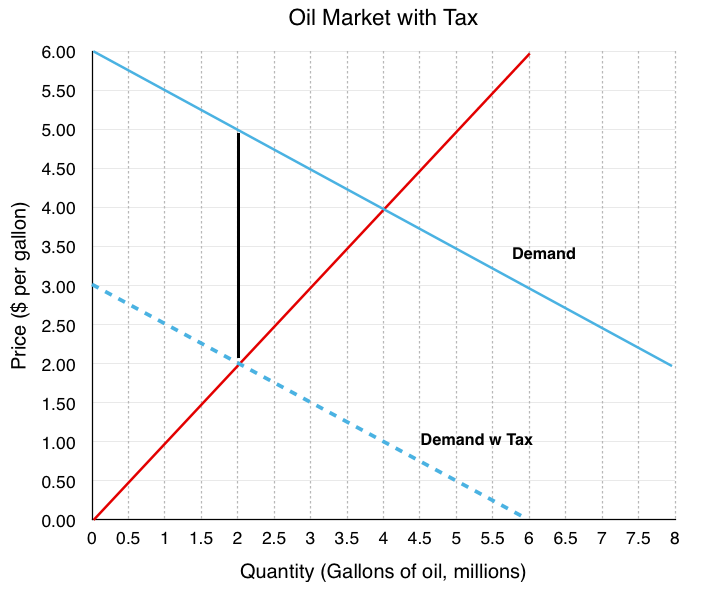

Eventually, stop at a point like C where the vertical gap between the DD and SS curves has been 20 per cent of the supply price (p 2).Īt q = q 1 at point C, the market would be in equilibrium after the imposition of the tax. Consequently, the vertical gap between the demand price and the supply price will increase. In order to locate the new post-tax equilibrium quantity, move from the point E downward to left along the SS curve. Now, (i) the post-tax equilibrium quantity the vertical gap between the DD and SS curves should be 20 per cent of the supply price. (i) After the imposition of the tax, equilibrium quantity bought and sold has decreased from q 0 to q 1.Īt this point or at q = q 0, the demand price and supply price are equal, both being equal to p 0.

If the post-tax equilibrium is compared with the pre-tax equilibrium, it is found that: The equilibrium point in this case would move from the point E to the point C. This equilibrium solution would be the same as obtained in the previous two cases-here the equilibrium output is qi and the price (that the buyers pay) is pi and the sellers receive their desired price p 2. In this case, the post-tax equilibrium would be obtained at the point of intersection, C, between the D 1D 1 and SS curves. That is why, in the figure, a curve D 1D 1 is drawn, which is parallel to DD but lies below the latter at a vertical gap equal to t. According to (iii), at the post-tax equilibrium point, the supply price would be the (demand) price of the good minus the amount of tax (t). Lastly, the third way of illustrating the effects of the imposition of a per unit tax has been shown in Fig. 1.17(a and b) that the post-tax equilibrium solutions are identical in both the cases-owing to the imposition of the tax, the equilibrium point would move from the point E to the point A. In this situation, both the buyers and sellers would remain satisfied. Here the equilibrium quantity would be qi and the price that the buyers would pay would be pi and the price that the sellers would receive would be p 2. The new post- tax equilibrium point would be obtained at the point of intersection A between the DD and S 1S 1 curves. 1.17(b) which is parallel to the SS curve but vertically above this curve by the distance t. Now, at any q, demand price would be obtained along the DD curve, but the supply price +1 would be obtained along a curve like S 1S 1 in Fig. According to (ii), at the post-tax equilibrium point, demand price would be equal to supply price +1. The second way of illustrating the effects of the imposition of a per unit tax upon the market equilibrium. At price p 1, the buyers are demanding the quantity q 1 and, at price p 2, the sellers are also supplying the quantity q 1, and so there is equilibrium and none of the buyers and sellers would tend to change the situation. 1.18(a), this equilibrium output has been obtained as q 1.Īt q = q 1 the price including the tax that the buyers would have to pay is p 15 and the sellers, after deducting the tax from pi, would get a price of p 2 which is the supply price at q = q 1. Therefore, the new equilibrium q after the imposition of the tax would be one at which the vertical gap between the DD and SS curves would be equal to t. As it is known, at any q, demand price is obtained along the demand curve and the supply price is obtained along the supply curve. This case has been illustrated in part (a) of Fig. In all these figures, DD and SS are the demand and supply curves of the good, and p 0 and q 0 are the equilibrium price and quantity before the imposition of the tax that are obtained at the point of intersection E between the DD and SS curves.Īccording to (i), the equilibrium quantity, after the imposition of the tax, would be that q at which the difference between the demand price and supply price would be equal to t. 1.17 in which the effect of the imposition of a per unit tax on market equilibrium is illustrated. Or, the supply price = demand price −t … (iii)Ĭorresponding to (i), (ii) and (iii), it will have three ways depicted in Fig. Or, the demand price = supply price + t … (ii) Or, the demand price – supply price = t … (i)


 0 kommentar(er)
0 kommentar(er)
